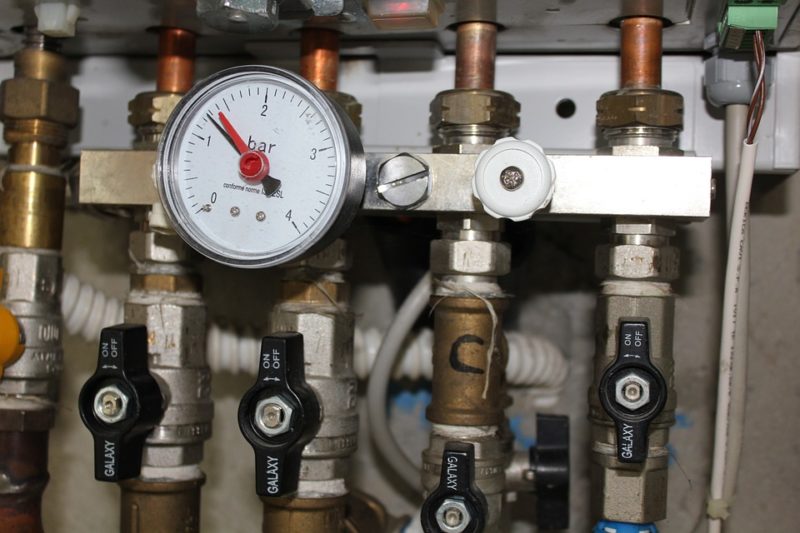How to remove water heater building block? In just a few steps, you can; and these things you will know as you delve into this article further.
Follow the steps to switch off the circuit breaker first, attach the hose, turn off the water, remove the cover in the access panel, and wipe the installed element before installing it.
Afterward, refill the device’s tank and replace the surface while switching the circuit breaker. While the steps may seem tricky, they are still possible. Just be sure, as mentioned, to turn the electricity off. Check for other potential leaks, if there are any. There is so much more to learn, so it’s best to dig into this article further!
Steps To Remove Water Heater Building Block
So, how to remove water heater building block? Below are steps to help you remove the water heater’s building block:
Step #1. Switching off the so-called circuit breaker
Turn off first the circuit breaker in an electrical panel. Use the voltage tester to determine if no electricity reaches the device. Consider this an essential safety tool to remove the water heater element with no power needed to use.
Step #2. Attaching the hose
Start to get the hose attached to a water heater but with no power present. This step helps determine sediments from clogging up the drain valve. Follow this step but do not drain the water tank.
Step #3. Turning off the water
Complete the step but shut off the water first. Turn off the water supply the same as you close the inlet valve. Perform this easy step which you can see above the device. Allow the air as it enters the tank so you will release the hot water in the machine. This step is a final process when you open the tap next to the faucet and turn on the hot water.
Step #4. Removing the cover for an access panel
Remove the cover in an access panel. The method to remove the surface in the access panel utilizes a screwdriver. The plastic body is visible in the water heater’s thermostat. So, gently remove this one. In this stage, inspect the wiring as needed. See if any part appears melted or damaged. Replace any of the damaged wires right away, preventing further damage. Detach the element wires in a water heater from an element. Also, loosen the screw.
Step #5. Removing the element without element wrench use
Make use of a socket rather than an element wrench. The standard measurement of the socket is a conventional inch and a half.
Step #6. Wiping new element before installing it
Clean and wipe the new element to install, which helps avoid debris transfer to the water heater. Follow the necessary procedures in this case. Attach the “O” ring to the new heating element. Attach the “O” ring and gently insert the piece into the heater’s tank. Tighten it with an element wrench. Nonetheless, it is not suitable to use a standard wrench considering this procedure.
Step #7. Refilling the water heater’s tank
Close the drain valve and turn on the water supply. Turn on the power supply immediately. Make sure the tank is filled up entirely before turning its power. An amount of water in half may bring potential damage to the heating element. Follow the next step to examine the new piece installed for possible leakage signs. Turn off the supply of water in case of a leakage. Continue as you tighten its part. Also, reposition the “O” ring.
Step #8. Replacing the cover in a thermostat and a switch in a circuit breaker
The insulation, access panel cover, and thermostat cover need replacement after the tank’s complete filling. After you complete the cover replacement, turn on the device as you switch the device on again. Inconsistency in water flow occurs more likely with open faucets, due to air in the water heater. Nonetheless, this is perfectly normal. The issue eventually resolves on its own after a short time.
Tools And Supplies Needed To Remove Water Heater Building Block
Get ready on the supplies such as a 38-millimeter socket, voltage tester, hose, and screwdriver. Use a voltage tester so no electricity will go to the device after switching the circuit breaker off. Use the hose to see if sediments clog completely in the drain valve. Also, use a screwdriver to get rid of the cover in the access panel. The time required to complete it is eight minutes. You may also want to read about where you can install the point of a used water heater.
Other Tips To Remove Water Heater Building Block
There are more valuable tips to consider removing the water heater building blocks.
- Turn off the electricity and let the water in the cylinder get cold.
- Put a stop in the water beginning the major water stop cock. Open the hot tap while you let it stay open, draining water in the expansion vessel and pipework.
- Get the hot outlet pipe disconnected in the cylinder.
- Feed the inspection camera as it connects to the phone to view it while visually assessing the condition.
- Get the outlet pipe reconnected while the hot tap is turned off.
- Open the primary water stopcock to open the hot tap the next time. This way, you remove any air trapped in it.
- Turn your attention to the cylinder again to check for any possible leaks.
It’s A Wrap!
Now you learn how to remove water heater building block as needed. There are steps mentioned for you to remember. Plus, bear in mind other tips to remove the blockage in it. But of course, get ready the tools and supplies when doing the said removal. You may want to read related articles; know how to clean calcium out of a water heater and how to replace a water heater element.

